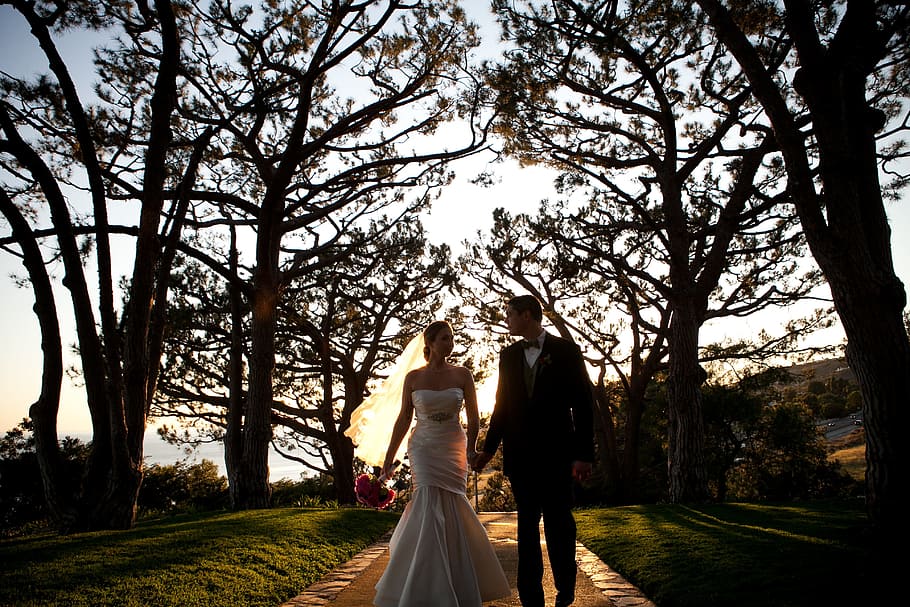Thousands of couples will be walking down the aisle between May and September, which is the unofficial traditional wedding season, with June being the most popular month. Before that happy day unfolds it is worth noting the numerous traditions and superstitions the event brings with it, many of which date back thousands of years. Some were originally conceived to ward off evil spirits and others to enhance good luck, fertility and prosperity.
First and foremost the prospective couple usually have to choose the day. Although most weddings now take place on a Saturday it was considered unlucky in the past. Fridays were also considered unlucky particularly Friday the 13th. As the saying goes:
Monday – brides will be healthy
Tuesday – brides will be wealthy
Wednesday – brides do best of all
Thursday – brides will suffer losses
Friday – brides will suffer crosses
Saturday – brides will have no luck at all
Okay, so you’ve chosen the day now you have to think about a dress. Traditionally most brides today marry in white, which symbolises maidenhood. However, before the white dress, brides usually wore their best dress, with the colour being a matter of preference.
Married in White, you have chosen right,
Married in Blue, your love will always be true,
Married in Pearl, you will live in a whirl,
Married in Brown, you will live in town,
Married in Red, you will wish yourself dead,
Married in Yellow, ashamed of your fellow,
Married in Green, ashamed to be seen,
Married in Pink, your spirit will sink,
Married in Grey, you will go far away,
Married in Black, you will wish yourself back
Naturally with the dress comes the veil. The significance of which relates to the belief that brides were thought to be particularly vulnerable to evil spirits. The veil was supposed to disguise the bride and therefore outwit malevolent spirits.
With your outfit sorted, the next big decision usually revolves around the ring. The most symbolic tradition during the wedding is the exchange of rings and the circle represents never-ending love and faithfulness, while the metal symbolizes constant love. It is placed on the third finger of the left hand because it was believed that a vein in this finger is connected directly with the heart.
“Something old, something new, something borrowed, something blue and a silver sixpence in your shoe.”
The saying is a familiar one but there is a lot more behind the rhyme than most people might realize.
The “something old” represents the couples’ friends who will hopefully remain close during the marriage, whilst “Something new” symbolises the newlyweds’ happy and prosperous future.
The “something borrowed” is often lent by the bride’s family and is an item much valued by the family. The bride must return the item to ensure good luck.
The custom of the bride wearing “something blue” originated in ancient Israel where the bride wore a blue ribbon in her hair to represent fidelity.
The placing of a silver sixpence in the bride’s shoe was to ensure wealth in the couples married life.
When the big day arrives, there are many superstitions associated with getting yourself to the church.
For starters, when the bride is ready to leave the house for the wedding ceremony a last look in the mirror will bring her good luck, however returning to the mirror once she has begun her journey will result in bad luck.
Seeing a chimney sweep on the way to a wedding is thought to bring good luck as are lambs, toads, spiders, black cats and rainbows. So, ladies be vigilant!
Conversely, seeing an open grave, a pig, a lizard, or hearing a cockerel crow after dawn are all thought to be omens of bad luck.
Bad weather on the way to the wedding is thought to be an omen of an unhappy marriage, although in some cultures rain is considered a good omen. Cloudy skies and wind are believed to cause stormy marriages. Snow on the other hand is associated with fertility and wealth.
As you make your way up the aisle, spare a thought for the bridesmaids who traditionally were dressed in similar outfits to the bride to confuse the evil spirits by acting as decoys and protecting her. They obviously don’t realize exactly what it is they are taking on!
The best man doesn’t get it much easier either. His duty is to protect the groom from bad luck and in some cases even has to put himself in harm’s way. He must ensure that once the groom has begun his journey to the church he does not return for any reason. He must also arrange for the groom to carry a small mascot or charm in his pocket on the wedding day.
When the best man is paying the church minister’s fee he should pay him an odd sum to bring luck to the couple.
Upon leaving the church, the newlyweds are often showered with paper confetti but this became a common substitution for a variety of previous things including flowers, petals, rice or grain. The idea was to bestow prosperity and fertility on the couple.
Once you’ve made it this far and everyone is enjoying the festivities it is time of the wedding cake to be presented and cut. Cutting the cake as a couple is now an integral part of the ceremony and performed to symbolize their shared future together.
So there you have it. Any brides to be would do well to take a glance through this list of “dos and don’ts” to ensure that your special day gets all the help it can to be as perfect an event as possible.
Poppy Watt


